1951
By 1951 Beachley was training its boys for only two corps – RE and REME. However, a handful of boys received 18 months education before their Corps training with the RAMC, the first four leaving in 1952. The school at Taunton closed in 1949 with the vehicle mechanics transferring to Chepstow. The first Quadrangular Games were held in 1950 between RAF Halton, Chepstow, Arborfield and Harrogate with Halton as host.
In 1950 the first three places on a Guards Drill Course for all arms went to three ex-Beachley boys. By this time BOBA had 2,185 members! At the Beachley HQ Branch, a locally made standard was dedicated and took its place in the history of BOBA.
In the mid-fifties a small number of Burmese boys joined Beachley; usually three or four per term and became prominent boxing and hockey.
The mid-1950s also was a time of worry that the proposed Severn Bridge would mean closure of the school at Beachley and a forced move to Hereford. In the event a viaduct would be constructed between Severn and Wye meaning the loss of a few playing fields. In the event, more land for sports purposes was acquired on the northern side of the School to make up for this loss. The decision to stay brought about active planning for modernisation of the School with a project for eight new barrack blocks, a Sergeants’ Mess, a hospital and 32 new married quarters at Beachley. The long-awaited drill square was built in 1954.
In 1957, the Control Equipment Mechanics moved to Arborfield and the first 6 Ammunition examiners began training in 1955. In 1954 the first mechanical draughtsmen arrived from Arborfield.
1959
In January 1959 a 3-term year was introduced and a Junior Company, or J company, was set up in which all apprentices would spend their first year, in which to concentrate on education and general technical training. The opening of another apprentices’ school at Carlisle meant much more trade reorganisation. By 1961 all RE trades were once again at Beachley. Back from Harrogate came the building trades, surveyors and electricians (RE). The vehicle mechanics headed to Carlisle while the electricians (REME) went to Arborfield.
The building of a new education block, with fully equipped laboratories, enabled the School to carry out its own Ordinary National Certificate course, with the first apprentice passing in 1960.
The Pipe Band (C Coy) was formed in 1958, joining the Military Band (B Coy) and the Corps of Drums (A Coy). A rival attraction on parade was the School Mascot, a pony called Beachley.
In 1959, the School took back the Quadrangular Games championship after a 10-year break.
In 1961 work started on the Severn Bridge, to be the fifth largest suspension bridge in the world.
In 1962, all the apprentices moved into the new barrack blocks and they then helped demolish the old First World War huts. Even then the huts retained some use as the rubble was used as hard core for the new outdoor swimming pool opened in May 1963. In 1963 splendid new Education and Survey blocks were opened.
January 1966 saw the opening of the Junior Ranks Club, the Severn Y Club, opened by the managing Director of NAAFI. Later in September of that year the Queen opened the Severn Bridge with part of the route being lined by Beachley boys and staff. Only days previously the school became the Army Apprentices’ College Chepstow. Gone was the Army Apprentice School cap badge to be replaced by the badge of the boys’ future corps e.g. RAOC, RE or RCT. A further development saw the senior apprentices being allowed to have and keep motor cycles and cars within camp.
1968
Col L G S Thomas became Commandant in January 1968 and was the first Welshman in that post and surprisingly the first Royal Engineer. During his command recruiting to the apprentice scheme was strong with 230 apprentices joining Group 70C in September 1970.
In June 1972 the initial training company, J coy, was disbanded with all recruits passing directly into the three training companies, A, B and C. This was as a result of the reduction in training time for non-technician trades from nine to seven terms. In 1971 the College Church, St Georges was finally completed when the organ was dedicated in November.
HRH Princess Anne was a guest of the College as part of the jubilee celebrations in July 1973.
The intake of apprentices in September 1974 was the largest ever – 351 boys! Such was the demand for places that the college found it necessary to create a new group of apprentices to be known as ‘Pot Apps’ or potential apprentices. These were boys, who because of the shortage of places in certain trades served in the college for a term before being allocated a place for trade training. At this time there became a far greater emphasis on traditional basic military skills – weapon training, field craft, tactics, map reading, First Aid and drill.
Although the College was principally staffed by Sappers, there were actually 23 different cap badges worn by the staff in 1978. Group 78A were the last Plant Operators to be trained at Beachley.
1980
The new Commandant, W M R Addison, arrived in January 1980 tasked with reviewing the military, educational and trade training in relation to the army’s needs and the College Charter. He published his views in his papers ‘Chepstow in the 80s’. There was to be only one intake a year, the first of which was Intake 81. The boys were placed in companies by trade – now numbering five – A, B, C, D, & E companies. The Trade and Education staff became members of the companies with, for instance, the Senior Instructor of the Electrical Department being company commander of E Coy. WRAC Educational officers found themselves as platoon commanders. Familiarisation visits by potential recruits and their parents were instituted. The end product of the re-organisation was ‘thee New Model Chepstow’.
By 1982, the six-term course consisted of an initial half term’s military induction with a half term’s trained Soldier cadre before pass out. In between the other four terms were spent on trade and education.
In 1982 the war in the Falkland Islands claimed the lives of four Beachley boys.
1983 was designated as the college jubilee year. Sixty eventful and successful years were the springboard to an enticing future and optimism reigned supreme at all levels. Superb new buildings and facilities vied with modern training methods to create the soldiers of tomorrow. The future was assured and endorsed by no less than the Secretary of State for Defence. That was the public image. However at grass roots level there was considerable concern at the apprentice wastage rate –often as high as 25% and low pass rates at GCE levels. This was off-set by trade success and sporting achievements.
Certainly the new college was more outward looking than the school of the past. Overshadowing the daily college activities there was a growing emphasis on value for money and the constant search for economy. For the first time the specific cost of producing an individual apprentice came under intense scrutiny even though the apprenticeship period had been reduced; by 1985 to a mere two years. It was at this time that ‘companies’ were transformed into ‘squadrons’ as in essence the college produced tradesmen only for the Royal Engineers.
Meanwhile the debate concerning individual training and army reorganisation continued unabated as in 1989/1990 the cold war crumbled and the wider demands of policing the world demanded change. It suddenly became apparent that while Beachley had been studiously and devoutly going about its business of shaping apprentices for an army career, in the starkest of terms it suddenly faced imminent closure; no matter the high standards and diversity of training. Suddenly the Commandant found himself fighting a rearguard action and fighting as much on political grounds as any other but always undermined with severe economic implications. As a sign of the changing times a huge amount of money had to be spent erecting a security fence all around the college.
As the college tried to maintain its composure and carry on there were many attempts in the higher echelons of the army to clarify both the strategy and detail of the future training of junior soldiers. Not that the senior army was unaffected. The 1991 review ‘Options for Change’ slashed the overall size of the army as well as the apprentices. With the college strength down to under 500 apprentices it was decided to transfer the RE junior leaders to Beachley.
1994
Beachley struggled on with closure set for June 1994 when the remaining trainees were dispersed to alternative places. There was no big bang; just the sad winding down of what had been a vibrant, progressive and appreciated establishment. The apprentices and staff persevered to the end and in a mark of respect the town of Chepstow invited the college to a final march through the town in February 1994. It is unclear who bears responsibility for the rainy weather on that day but it seems clear that someone was shedding a tear.
In April 1994 at a special meeting of ex-apprentices at Beachley, a committee was formed to take over the running of BOBA from the College authorities. This new organisation has come to be known as ‘New BOBA’. This changeover preceded the formal closure of the Army Apprentices’ College Chepstow in June 1994. The existing account was taken over and various items of memorabilia were transferred to new BOBA. However, most of the materials in the A A College Chepstow Museum were passed to the RE Museum at Chatham although a large number of photos are held locally by Chepstow Museum.
In September 1994, the first reunion of new BOBA was held at the Old Course Hotel in Chepstow. The event has been held annually since then at the same venue in September but now known as the Chepstow Hotel.
In September 1999 new BOBA celebrated 75 years since the opening of the school at Beachley. A message of congratulations was received from HM The Queen.
In November 1999 BOBA veterans took part as a group for the first time in the annual London Cenotaph Parade, and have paraded every year since then.
BOBA remains a thriving organisation with more than 500 active members.
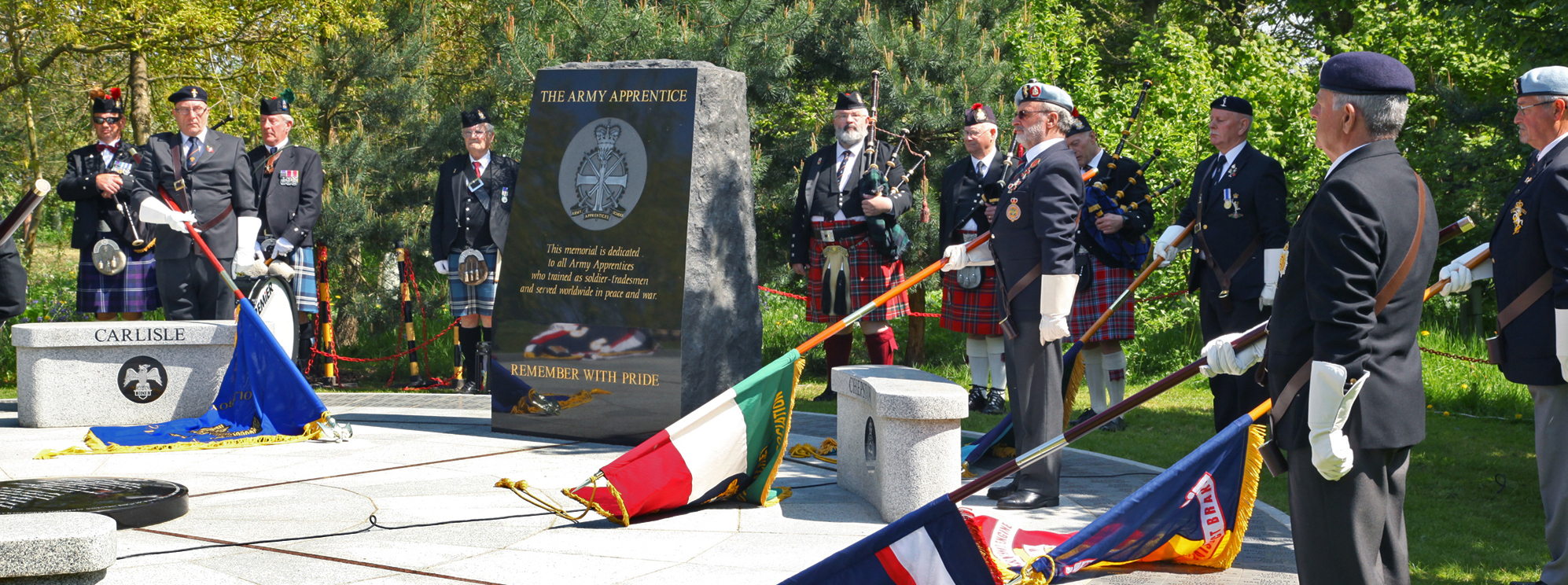
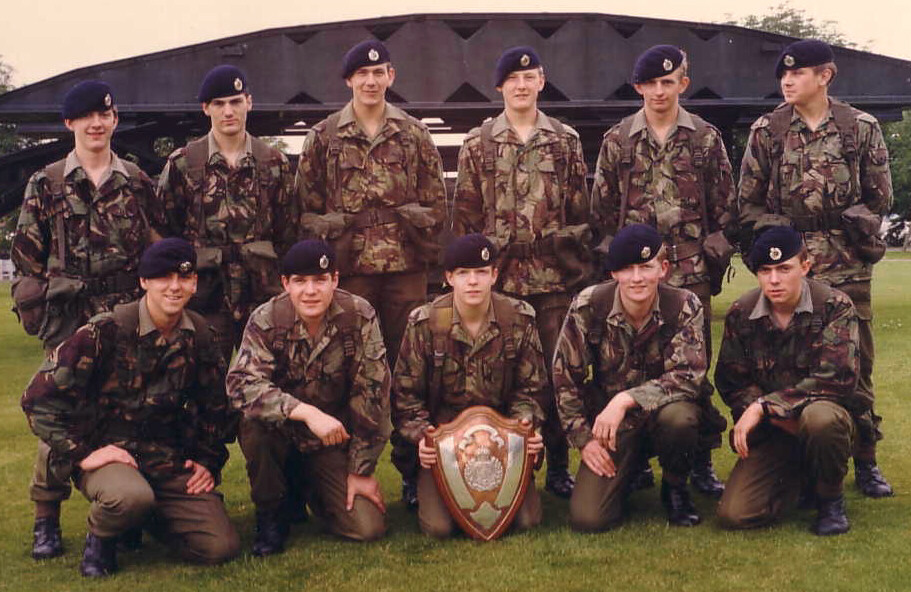
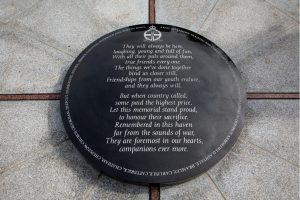
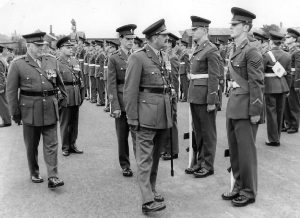
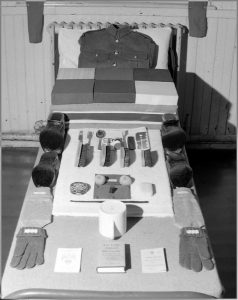
Do you know the name of the first Pipe Major (from 1958)?
Came across this Sappers Story referencing the Chepstow bombing strafing in WW2 as follows:
Incidents from a Sapper’s Life Behind the Lines Chepstow and Europe by A Sapper
“War is Real
I joined up in January 1938, looking forward to an adventure in the Army. I was at the Army Technical School (Boys) at Beachly Camp near Chepstow as a trainee apprentice electrician. In 1940 I got a glimpse of the fact that we really were at war. About one hundred apprentices were doing PT (Physical Training) in a large gymnasium about 9 am and the siren went off and the order given to run out of the gymnasium immediately and disperse over the playing field. A Heinkel 111k swooped over machine-gunning, and one apprentice was killed and about four injured. A few days later, at about 8.30 am, another German plane swooped over on a bombing run and dropped a stick of four bombs. Three of them exploded causing quite large craters in the playing fields. The fourth bomb failed to explode but landed in the workshop area. It bounced on a large concrete slab, passed through the Paint Workshop leaving its tail behind, and landed so that’s its nose pointed towards the Beach Patrol Hut. In a very short time, the Beach Patrol that had been on duty overnight and were enjoying a well-earned rest, awoke hastily, took one look at the bomb, and were seen running in the direction of the barracks in their shirts and underpants! A sense of humour is good for morale.
Behind the Lines
Some time later (about a month after D-Day) I landed with my unit near Caen in the north of France and eventually we were given the task of making the power station fully operational. Having done that, and when enjoying a break, we were presented with a challenge. A steam-powered fire engine at the back of the station almost spoke to us with a request, “How about getting me going?” Sappers always accept a challenge, in fact, sometimes their enthusiasm gets the better of them. We got it going alright, but soon discovered we had forgotten to find out how to stop it, so we had to keep going around the power station area until it ran out of steam. It was embarrassing to have to push it back to its original parking place, but fortunately for us we did not get hauled over the coals for our bit of fun.
Towards the end of the war in Europe, my small unit was moved to Roosendaal in Holland where the dykes had been deliberately opened, flooding the whole area. Our job was to build part of a seven thousand volt overhead line with the view of transmitting power from Belgium into Holland to get the pumps going. The line was to be a temporary one, using untreated wooden poles. It was great fun but frustrating because the ground was shifting sand and the trenches had to be shuttered to enable building to proceed. When it came to stringing (putting the lines up), we did not use ladders to get up the poles to work, but climbing irons with spikes. It was interesting to see the type of climbing irons used by the local Belgian teams that were responsible for the other part of the line. We used to borrow each others irons to get the feel of them, but we came to the conclusion that our own irons were the best.
We did not work in the dark and I and my mate were invited by a local Dutch workman in the building trade to get our feet under his table during the evenings. His young wife was expecting their first child, and their home was a very humble one on the ground floor of a row of tenement type houses. During our evening chats, we were shown the trapdoor in the floor of the living room, underneath the table, which our host had constructed so that he could hide from the Germans when they advanced through Holland. It was only about eighteen inches between the floor and the ground, but it was quite successful, and he was able to spend the duration of the occupation in his own home. When the construction of the line was completed, and before we were moved on to our next electrical job, we were given a break of a week in the UK. Realising the state of the local Hollanders with both lack of food and worn-out bicycles, I thought it would be helpful to my Dutch friend to get some new tyres and inner tubes. The Customs were cooperative, and the tyres fitted. Over the years I had completely forgotten this, but my friend hadn’t, and about four years ago, having become the owner of a thriving building business, he wanted to show us his appreciation. So he invited us to visit him at his new location in Belgium (income tax had become half what it was in Holland), accommodation in a private hotel would be provided, and he laid on a taxi to take us wherever we wanted to go. When we got there, our host said, “I was the only person in Roosendaal who had decent tyres on his bike. At the time. we had nothing but you helped us.”
#RoyalEngineers #Sappers
Ref: https://www.bbc.co.uk/history/ww2peopleswar/stories/58/a2458758.shtml
Most of the history is very accurate but I can help from my experience in Jan 1973.
Pot-App’s were already there from 1972 completing there first term by December 72 and a number of them actually joined 73A and were training to be Plant Operator’s . so Plant opps were in the mix by 73 but not yet passed our as adult soldiers. I met several of them later preparing to serve in NI and Cyprus. As a foot note, Coco Lee was my 1 platoon Sargent and the “SasMan” was our 6 Platoon Sargent in our final term in September to December 1974. Spent very enjoyable time with Sasman in Belize some 5 years after passing out. I was in the Pipe Band that welcomed Princess to the College in 1973. ( we were all given brand new overalls for HRH to walk through our old metal work class room down at the training shops ‘down ‘ the hill. Hoping this will inspire some old memories for other’s . Robin or Paddy McKnight. 73A